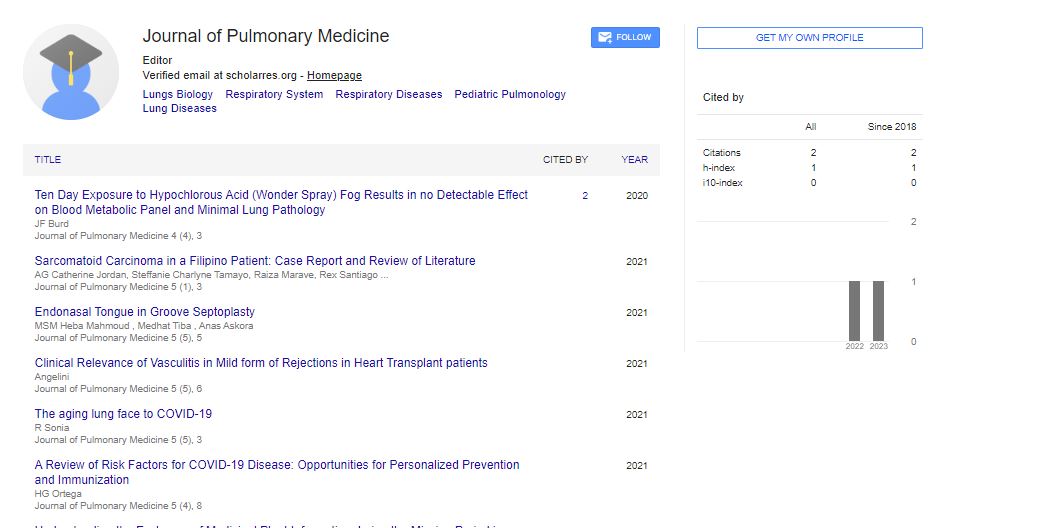Editorial, J Pulm Med Vol: 1 Issue: 1
Finding a Fitting Ending for Asthma
| Richard Barbers* | |
| Department of Internal Medicine, University of Southern California, USA | |
| Corresponding author : Richard Barbers Professor of Medicine, Department of Internal Medicine, University of Southern California, USA Tel: +1 323 2267923 E-mail: barbers@usc.edu |
|
| Received: February 11, 2017 Accepted: February 15, 2017 Published: February 21, 2017 | |
| Citation: Barbers R (2017) Finding a Fitting Ending for Asthma. J Pulm Med 1:1. |
Abstract
At the start of this century, I wrote about the future of asthma and expressed optimism that we would advance our understanding about asthma pathophysiology and develop more precise management techniques for asthma.
Keywords: Asthma, Airway microbiome
| At the start of this century, I wrote about the future of asthma [1] and expressed optimism that we would advance our understanding about asthma pathophysiology and develop more precise management techniques for asthma. In more than a decade and a half, we have witnessed the following: | |
| We have shown that the Th2 paradigm although valuable does not fit or fully explain the variability in response to therapy and supports the phenotypic heterogeneity of asthma [2]. The “one size fits all” model is becoming less important. | |
| We have learned more about the airway microbiome and its critical relationship to the inception of asthma and atopy. These observations and the links to epidemiologic observations would lay a firmer foundation for the “hygiene hypothesis” [3]. This hypothesis hinges on the observation that microbial exposures early in life could influence the development of atopy and asthma. | |
| We have shown more precise therapeutic regimens that target inflammatory components [4] as well as target the remodeled features of asthma. Some of these interventions appear to be disease altering [5]. | |
| We have shown that the “Dutch Hypothesis” implying a relationship between asthma and COPD/emphysema may indeed have “overlap” [6]. This hypothesis suggests that asthmatics develop clinical features of COPD and the determinants for the shared clinical features are related to environmental factors and genetic polymorphisms. | |
| Although a cure for asthma may yet be elusive because of the heterogeneity in pathophysiology and diversity in the expression of the disease, our understanding of asthma has evolved substantially over the past decade and a half. | |
| However, the challenges we face in the next decade and a half are multiple and include: | |
| 1. Determine the predictors for persistence of childhood asthma to later years when therapies appear less effective. | |
| 2. Establishing biomarkers that define the various phenotypes that will enable us to clarify and to stratify patients more appropriately as well as measure responses to our interventions. | |
| 3. Once we better understand these asthma phenotypes we can then know how to personalize and more precisely use therapies currently being developed. | |
| 4. Understanding whether and how newer therapies and interventions may be disease altering and reverse or attenuate remodeled airways. | |
| 5. Understanding whether the “overlap” entities warrant different management approaches. | |
| As we move towards advances where we link the scientific biologic information with the clinical phenotypes, we can attain what is “reachable”. We can improve patient quality of life, reduce costs of therapies and reduce healthcare utilization. | |
| Again, I have optimism that these challenges will be met with vigor and we will become closer to making asthma a disease of the past. | |
References |
|
|
